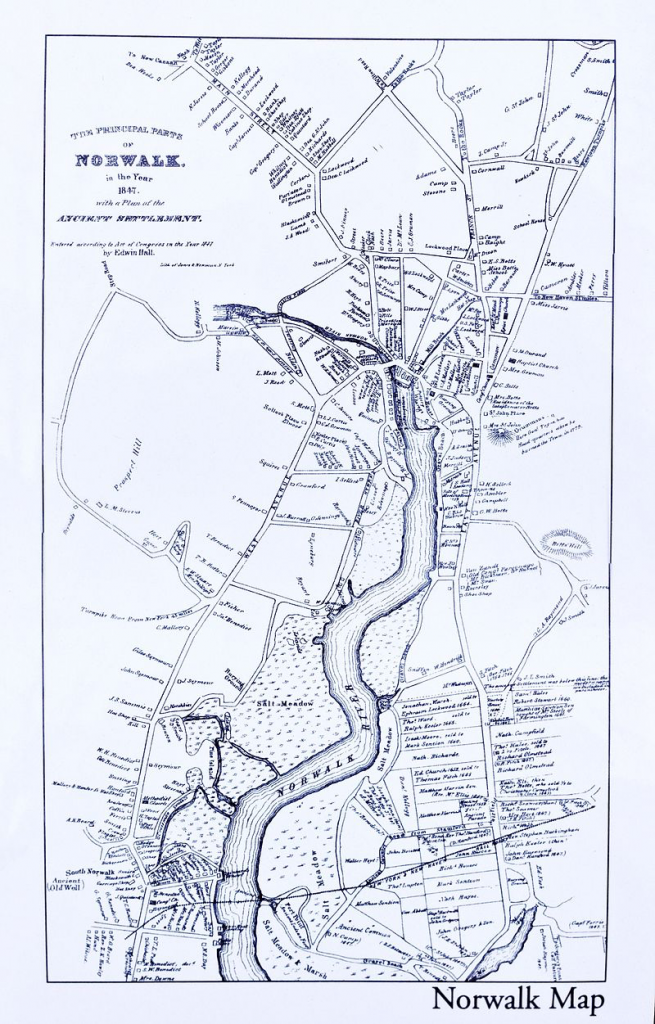“In 1651 thirty spirited families permanently settled “Norwalke.” The settlement was located in the section known today as East Norwalk. Descendants of these indigenous settlers are still living in Norwalk and in the surrounding vicinity. Norwalk became a city in 1913, at which time it consolidated with South Norwalk and the East Norwalk Fire District.“

Much has changed since Norwalk’s historic, seaport was settled on September 11, 1651. Situated on Long Island Sound, Norwalk has 22.8 sq. mi. of land and boasts 13.5 sq. mi. of water that is dominated by the Norwalk Islands chain, stretching six miles along its coastline. The city is also home to 1050 acres of park land.
Density can benefit communities — increasing social, convenience, economic, and environmental factors. Mixed-use can create walkable spaces with lively places and lots of amenities. More people patronizing local merchants helps them stay in business. Without density, small businesses struggle. Density can also support better and cheaper transport and greater energy efficiency in buildings.
Density in the wrong place -especially density bringing excessive traffic and increased local driving is bad. Historically, Norwalk’s traffic analysis studies (usually conducted in conjunction with proposed development) have always return the same result, FONSI — ‘finding of no significant impact.’ Others beg to differ.
Density in the wrong place can also create urban heat island effects and waste, leading to poorer ecosystem quality. Norwalk has the lowest tree canopy in Western Connecticut. Too much density can lead to loss of privacy and increased building heights impact direct sunlight which can reduce physical and mental well being.

How much density is too much?
“When the cost of fitting in one more apartment or housing complex, and number of people living in them outweighs the benefits of additional business generated or city tax revenues collected or when quality of life, infrastructure or natural resource amenities become overly stressed.“
More Densely Populated than Stamford & Danbury
| Population | Danbury | Norwalk | Stamford |
| 2000 | 74,848 | 82,951 | 117,083 |
| 2010 | 80,893 | 85,603 | 122,643 |
| 2013-17 | 84,573 | 88,537 | 128,851 |
| Land Area (Sq. Mi.) | 42 | 23 | 38 |
| Pop. Sq. Mi. (2013-17) | 2019 | 3873 | 3423 |
| Median Age (2013-17) | 38 | 39 | 37 |
| # of Households (2013-17) | 29,692 | 33,385 | 48,647 |
One of the Most Densely Populated Cities in Connecticut
| City/Town | Population Density | Land Area | Population (2018) |
| Bridgeport | 9118 | 16.1 | 146,417 |
| Hartford | 7113 | 17.4 | 123,628 |
| New Haven | 6984 | 18.7 | 130,529 |
| Pemberwick | 6062 | 0.7 | 4,114 |
| New Britain | 5454 | 13.4 | 72,839 |
| Byram | 5268 | .8 | 4,216 |
| West Haven | 5110 | 10.7 | 54,918 |
| Jewett City | 4840 | .7 | 3,411 |
| New London | 4809 | 5.6 | 27,032 |
| Manchester | 4627 | 6.5 | 29,899 |
| Rockville | 4336 | 1.7 | 7,332 |
| Thompsonville | 4146 | 2 | 8,439 |
| Willimantic | 3908 | 4.4 | 17,184 |
| NORWALK | 3864 | 22.9 | 88,436 |
| Waterbury | 3810 | 28.5 | 108,672 |
| Danielson | 3642 | 1.1 | 3,983 |
| Riverside | 3485 | 2.4 | 8,414 |
http://zipatlas.com/us/ct/city-comparison/population-density.htm
